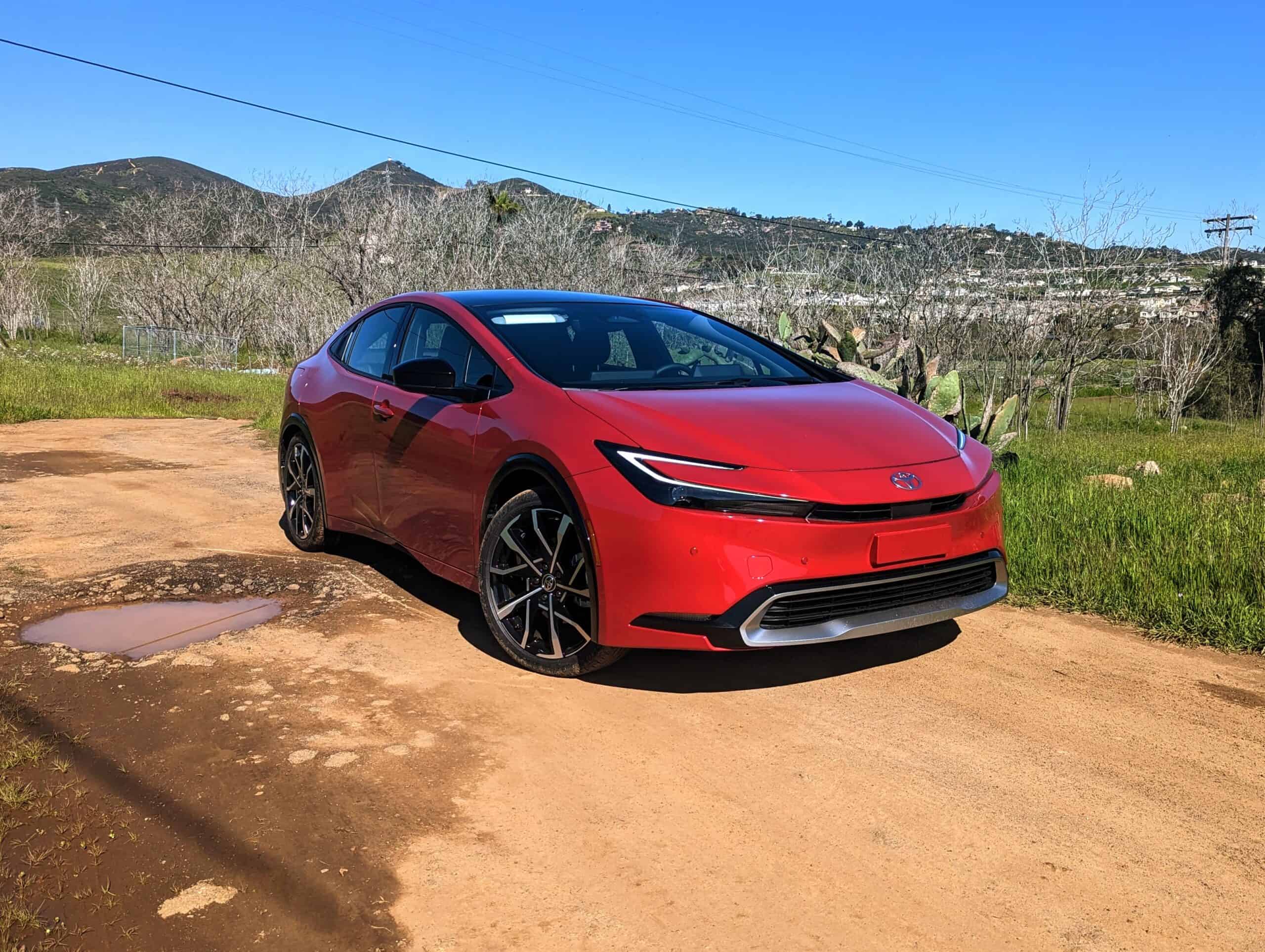

Toyota has lately been under-promising and over-delivering. We all assumed the 2023 Prius Prime would be a modest improvement over the outgoing model, but that would be the low-ball of the year. 0-60? Faster than a Civic Si. MPG? Over 50! Range? 44 miles all-electric! The only problem? Since it’s not made in America, it won’t get a tax credit if you decide to buy one. (Sad trombone)
The biggest news for the 5th-generation Prius is that it can no longer be labeled a weird or ugly car. In fact, it may not even be a stretch to call this the stylish option in the plug-in hybrid world now. Its closest competitor, the Kia Niro, also took a more design-forward approach for its latest generation, and it makes sense. Toyota says this Prius was targeted at younger buyers who don’t want to go all-in on EVs, so it had to look palatable. We’d say they overshot the runway in all the right ways.

The Prius Prime does not stray far from the design of the regular Prius. The only main differences are in the 19″ wheels, the cursive Prime badge on the trunk, and the fact that you can opt for a 150-watt solar roof. A dual-pane moonroof is still available as well, but the solar roof can charge the high-voltage and 12V batteries. Theoretically, if you left your Prime outside in the summertime with clear skies for a couple of weeks, the 13.6-kWh lithium-ion battery could be fully charged for free. While not a realistic scenario, it would be better to utilize this feature to do quick top-offs after parking your car on the roof of an airport parking deck in Arizona during a weekend vacation. Unfortunately, there is not a screen inside the car that displays the status of the panel, so it will be more difficult to gauge how effective it will be day-to-day.
The Prius Prime’s interior is another pretty major step forward for the nameplate. The vertical touchscreen and swath of gloss black plastic are gone. In their place is a combination of the bZ4X and the Crown, making it a much more premium atmosphere than it really needs to be. Save for a few acceptably hard plastics and an interesting mish-mash of layers higher in the dash and on the door panels, everything looks and feels quite nice for a Prius. The steering wheel and instrument cluster require you to set the column as low as it will go, since you are supposed to view the cluster above the top of the wheel, not through it. If you’re 5′ 9″ or taller, it works just fine. Shorter people might find it ergonomically difficult.

You can tell the Prime apart from the regular Prius on the inside by one main aspect: the red trim and ambient lighting. Where the hybrid model uses blue, the Prime gets a sporty red look instead. That’s because the Prime is positioned as the sportier model, with only SE, XSE and XSE Premium trims available (Toyota’s sport trim structure). As a result, black is the only seat color choice on all trims no matter if you get cloth or Softex. Like the hybrid, however, the front seats are available with both heating and ventilation, and the rear seats can be heated on the XSE Premium trim.
Powered by the same 2.0L inline 4-cylinder engine as the Prius Hybrid, the 2023 Prime bumps up the electric motor and battery size to give this model a sizable jump in power over the previous generation. Thanks to the 161-horsepower from the electric motor, total system output is a commendable 220 horsepower, giving the Prius more oomph than a Honda Civic Si. You read that right, a Prius is faster than a Civic Si. The new lithium-ion battery is 13.6-kWh in size and can be charged via a rather slow 3.2-kW onboard AC charger, giving the Prime 44 miles of all-electric range. That’s a massive jump over the previous car’s 25-mile range. EPA combined fuel economy drops just a smidge from 54 mpg to a peak 52 mpg. XSE and XSE Premium trims lower that number to 48 due to their heavier curb weights.
Toyota has something truly special here with the third-generation Prius plug-in hybrid, and has priced it quite aggressively to match. We never thought the statement would cross our keyboards, but this Prius is the craziest combination of features. 0 to 60 like a Civic Si, fuel economy like a Prius (quite naturally), electric range like you’d expect out of someone else’s plug-in hybrid. Because Toyota has been really dedicated to very short range plug-in hybrids, that is very rational on a resource utilization front and of course, a fuel efficiency front.
Available this Summer, the base SE trim with the highest fuel economy will cost about $5,000 more than the Prius Hybrid. Keeping in mind that all-wheel drive is not available on any trim, that base trim starts at $32,350, while the XSE bumps that up to $35,600, while the fully-loaded XSE Premium trim comes in at $39,170. The latter two can go a little higher with some options and packages, but in general, these prices are lower than we had originally expected for the fastest and sexiest Prius ever. Should you go with the Prime over the regular Prius? That depends on whether you are willing to charge your Prius with a plug and whether you prefer to have all-wheel drive. Unfortunately, you can’t have both, but you can rest assured that no matter which way you go, you’ll be driving the gold standard in hybrids today.




